#Phrynosoma
Text

Texas Horned Lizard (Phrynosoma cornutum), family Phrynosomatidae, found in the south central and south western United States and far northern Mexico
photograph by Sean Fitzgerald
455 notes
·
View notes
Note
Hello, do you have a favorite north American lizarb?
I am a big fan of Phrynosoma! I have only ever seen one in the wild, a tiny juvenile, but I'm a great appreciator of their remarkable anatomy and blood-squirting eyeballs.

#lizard#animals#Phrynosoma#horned lizard#biology#the more you know#or in this case#the less you wish you knew#cw: gore#cw: blood#cw: body horror#cw: what the actual fuck#cw: why is nature like this#cw: pretty effective though you've gotta admit#answers by Mark#anon#anonymous
257 notes
·
View notes
Photo

A greater short-horned lizard (Phrynosoma hernandesi) in the USA
by Noah K. Fields
#greater short horned lizard#lizards#reptiles#Phrynosoma hernandesi#Phrynosoma#Phrynosomatidae#squamata#reptilia#chordata#wildlife: usa
348 notes
·
View notes
Photo

Roundtail horned lizard (Phrynosoma modestum) in Texas, U.S.
Noah K. Fields
92 notes
·
View notes
Text
another addams family post. this is pugsley's "toad" and this scene has some "toad croaking" foley, which just cracks me up because while one of the common names for this animal is technically "horned toad," that, my friend, is a lizard.

like,,,

#words words words#the addams family#lizards#herpetology#horned toad#to be fair the genus name 'Phrynosoma' literally means 'toad-bodied'#so there is a reason to mix them up#but there is also zero chance that that animal would ever make any noise let alone a croak#don't even get me started on morticia's plants#specifically the poison oak and the hemlock
3 notes
·
View notes
Text


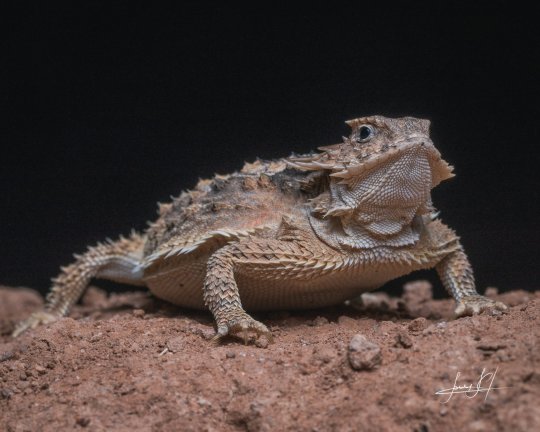

2 notes
·
View notes
Text

Flat Fuck Friday!
(Phrynosoma hernandesi - Greater short-horned lizard)
1 note
·
View note
Text

Texas horned lizard (Phrynosoma cornutum)
Reptiles and Amphibians of the World. Written by Hans Hvass. Illustrated by Wilhelm Eigener. Originally published in 1958.
Internet Archive
196 notes
·
View notes
Text
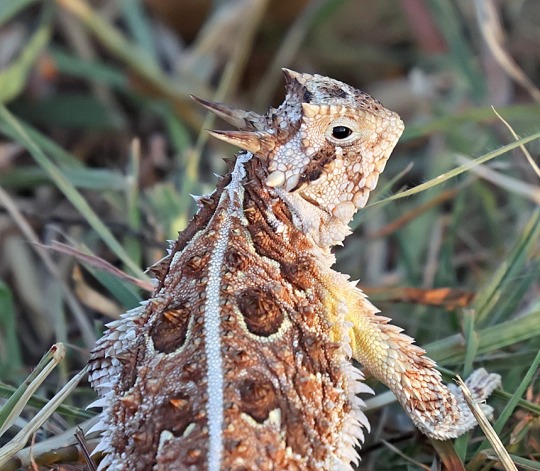
Texas Horned Lizard (Phrynosoma cornutum), family Phrynosomatidae, Palo Duro Canyon, West TX, USA
photograph by Keith Turpin
307 notes
·
View notes
Text

Coast horned lizard (Phrynosoma coronatum)
By: Unknown photographer
From: Handbuch der Biologie der Wirbeltiere
1913
71 notes
·
View notes
Text
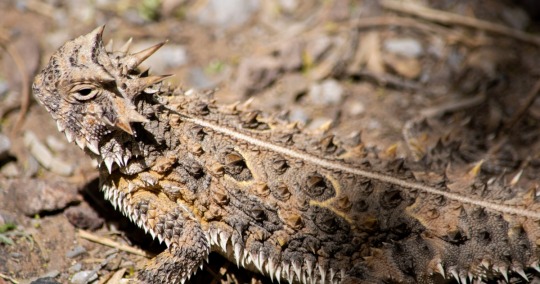
Thermal refugia and persistence of Texas horned lizards (Phrynosoma cornutum) in small towns
Mary R. Tucker, Daniella Biffi, Dean A. Williams
Vegetation loss is a primary cause of habitat degradation and results in a decline in reptile species abundance due to loss of refuge from predators and hot temperatures, and foraging opportunities.
Texas horned lizards (Phrynosoma cornutum) have disappeared from many areas in Texas, especially from urbanized areas, probably in large part due to loss of suitable habitat. This species still occurs in some small towns in Texas that still contain suitable habitat.
Long-term data from Kenedy and Karnes City, Texas indicate that when study sites experienced significant shrub and vegetation removal horned lizards declined by 79%.
We hypothesize the decline was due to the degradation of the thermal landscape for these lizards. We determined the preferred temperature range (Tset25 – Tset75) of lizards at our study sites and took field measurements of body temperature (Tb).
Temperature loggers were also placed in three microhabitats across our study sites. Shrubs and vegetation provided the highest quality thermal environment, especially for about 5 h midday when temperatures in the open and buried under the surface in the open exceeded the lizards' critical maximum temperature (CTmax) or were above their preferred temperature range.
Horned lizard density was positively related to the thermal quality of the habitat across our sites. Texas horned lizards in these towns require a heterogeneous mix of closely spaced microhabitats and especially thermal refugia, such as shrubs and vegetation along fence lines and in open fields. Maintaining thermal refugia is one of the most important and practical conservation actions that can be taken to help small ectotherms persist in modified human landscapes and cope with increasing temperatures due to climate change.
Read the paper here:
Thermal refugia and persistence of Texas horned lizards (Phrynosoma cornutum) in small towns - Tucker - 2023 - Ecology and Evolution - Wiley Online Library
30 notes
·
View notes
Note
I SEEK THE FORBIDDEN FACTS
Unsure what "the forbidden facts" are but ill tell you some of the ones I decided not to post due to nature and general fucked-ness of them (In my opinion but everyone is different)
Dolphins are freaks and masturbate using beheaded fish.
When a female Ferret goes in to heat their bodies produce a high amount of the hormone 'oestrogen' which will continue to be produced en masse until she has mated. Having such high quantities of oestrogen for a prolonged period of will eventually result in Aplastic Anaemia, which is caused by the damage sustained by the bone marrow and blood cells by the high levels of the hormone. So in short she will die a pretty painful death.
At least eight species of horned lizard (Phrynosoma) can aim and squirt blood from their eyes. They restrict the blood flow to their head until the pressure builds up, rupturing the vessels in their eyelids. They do this as a defense mechanism to confuse their predators.
Cymothoa exigua, also known as the tongue-eating louse, is a parasite that latches onto a fish’s tongue and feeds on the blood vessels. Eventually, the tongue falls off and the parasite attaches itself to what’s left and becomes the fish's new tongue.
some of those are actually kinda cool to me, but as you can tell, 2 of them are uh.. yeah. Anywho, I hope this is what you were asking for, if you want more animal facts to use against your enemies, just let me know ;)
but no knowledge is, or should be, forbidden. knowledge is meant to be shared :)
#the horned lizard one is p cool tho#also the sex facts are considered forbidden because im ace#lol#dolphin#dolphins#ferret#ferrets#horned lizard#horned lizards#cymothoa exigua#animal#animals#animal fact#animal facts#fun animal fact#fun animal facts#fun fact#fun facts#fact#facts#zoology#dolphins are freaks imo#they got too much brain#capable of evil#vs sharks which are heehoo fish brain#reptiles#asks#ask#answered#anonymous
28 notes
·
View notes
Photo

Cuando se siente amenazado, el lagarto cornudo gigante o gran lagarto cornudo (Phrynosoma asio) dispara sangre desde sus ojos hacia el agresor. El agresor ve la sangre en sí mismo y cree que de alguna manera ha sido herido. — view on Instagram https://ift.tt/QXKEngG
12 notes
·
View notes
Text
expect mostly ultrakill and mgs rbs
also i do art requests
fun fact my username is not a homestuck reference
music recs are apprecited btw
my various alt accounts and accounts on other places under the cut
@patsatmat for chara dreemurr specific rbs
@natvathat for kris deltarune specific rbs (inactive)
@machines-of-wire for rbs about wires/machines (tw for gore)
i used to run @rando-daily
insta: @ratkatbat_ (where i post art)
@phrynosoma-asio for lizard specific rbs
@cucaw-or-something for bird specific rbs
youtube: @ratkatbatv1 (where i post ultrakill clips)
#main tags i use ->#(this is mostly for me)#ultrakill#lisa the painful#undertale#lizards#insp#art ref#ratkat art#ratkat speaks#irish stuff
4 notes
·
View notes
Text
Ernst Haeckel was born #OTD (16 Feb 1834 - 9 Aug 1919). Here are two of his Kunstformen der Natur (1904) reptile plates that don't get shared as often, along with keys to the species depicted: Plate 79 Lacertilia (lizards) + Plate 89 Chelonia (turtles).




Key to Plate 79:
1. Cameroon Sailfin Chameleon
2. Chameleon Forest Dragon
3. Flying Dragon
4. Texas Horned Lizard
5. Kuhl's Flying Gecko
6. Common Basilisk
7. Frill-necked Lizard
8. Thorny Devil
-
1.Chamaeleon montium (Buchholz) = Trioceros montium/Chamaeleo montium Buchholz, 1874 (See Trioceros montium)
2. Lophyrus tigrinus (Duméril) = Gonocephalus chamaeleontinus Laurenti, 1768 (See Gonocephalus chamaeleontinus)
3. Draconellus volans (Linné) = Draco volans Linnaeus, 1758 (See Draco volans)
4. Phrynosoma cornutum (Wiegmann) = Phrynosoma cornutum (Harlan, 1825) (See Phrynosoma cornutum)
5. Ptychozoon homalocephalum (Kuhl) = Ptychozoon kuhli Stejneger, 1902 (See Ptychozoon kuhli)
6. Basiliscus americanus (Daudin) = Basiliscus basiliscus (Linnaeus, 1758) (See Basiliscus basiliscus)
7. Chlamydosaurus kingii (Gray) = Chlamydosaurus kingii Gray, 1827 (See Chlamydosaurus kingii)
8. Moloch horridus (Gray) = Moloch horridus Gray, 1841 (See Moloch horridus)
Key to Plate 89:
1: Leatherback Turtle
2: Hawksbill Turtle
3: Argentine Snake-necked Turtle
4: Mata Mata
5: Geometric Tortoise
6: Galápagos Tortoise
7: Common Snapping Turtle
-
1. Dermatochelys coriacea (Blainville) = Dermochelys coriacea (Vandelli, 1761)
2. Caretta imbricata (Gray) = Eretmochelys imbricata (Linnaeus, 1766)
3. Hydromeda tectifera (Wagler) = Hydromedusa tectifera Cope, 1869
4. Chelys fimbriata (Duméril) = Geochelone nigra (Quoy & Gaimard, 1824)
5. Testudo geometrica (Linné) = Psammobates geometricus (Linnaeus, 1758)
6. Testudo elephantina (Duméril) = Dipsochelys dussumieri Gray, 1831
7. Chelydra serpentina (Schweigger) = Chelydra serpentina (Linnaeus, 1758)
#turtle#turtles#tortoise#tortoises#lizard#lizards#reptiles#Chelonia#Testudines#Lacertilia#herpetology#natural history art#scientific illusration#Ernst Haeckel#European art#20th century art#1900s#Art Nouveau#illustration#print#book plate#Kunstformen der Natur#OTD#animals in art
4 notes
·
View notes
Text
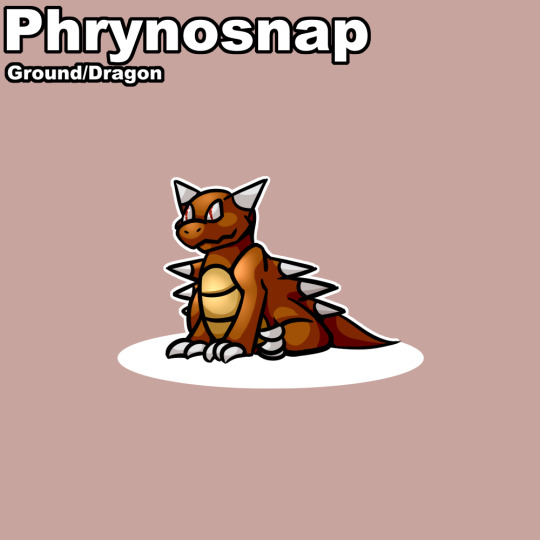
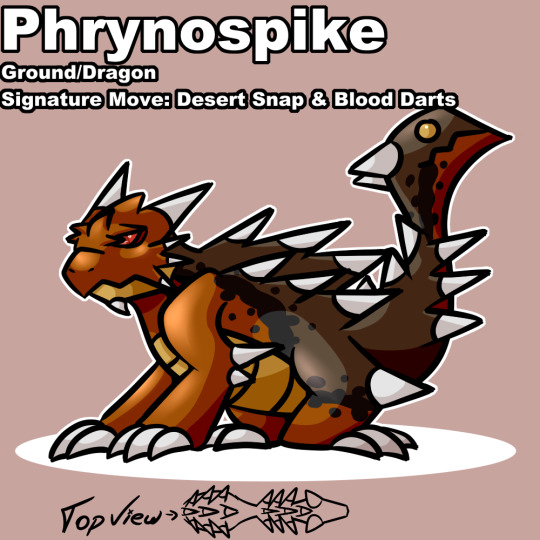
Name: Phyrnosnap
Name Etymology: Portmanteau of Phrynosoma (The genus names for Horned Lizards) and Snap
Classification: Horned Pokemon
Type: Ground/Dragon
Evolution Method: Evolves into Phrynospike at Level 40
Flavour Text: True to it's name, it likes to snap at anything that gets too close to it. This is just its way of learning about the world around it.
Name: Phyrnospike
Name Etymology: Portmanteau of Phrynosoma (The genus names for Horned Lizards) and Spike
Classification: Horned Pokemon
Type: Ground/Dragon
Evolution Method: Evolves from Phrynosnap at Level 40
Flavour Text: Incredibly lazy but incredibly powerful. Phrynospike would much rather lay down than battle much to the chagrin of their trainers. If it decides to fight, be wary of it's poisonous horns.
Desert Snap
Ground
Physical
60 BP / 100 Acc / 20 PP
Phrynospike’s Signature Move. Phrynospike bites down on the target with its main mouth and false head’s mouth. This move strikes twice.
Blood Darts
Plasm
Physical
80 BP / 90 Acc / 15 PP
Phrynospike’s Signature Move. It shoots solid darts of blood from its eyes that may poison the target.
(Obviously based off Horned Lizards, Thorny Devils, and a little bit of Gila Monsters)
3 notes
·
View notes